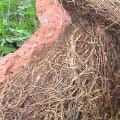Construction dust is an unavoidable byproduct of renovation, remodeling, and building projects. Its fine particles, often composed of materials like drywall, wood, concrete, and insulation, can linger in the air long after the work is completed. The duration construction dust stays airborne depends on several factors, including the type of dust, air circulation, humidity, and cleaning methods. Understanding how long construction dust remains in the air is essential for maintaining a safe and clean environment, as prolonged exposure to these particles can have health implications and affect air quality.
Factors Influencing the Duration of Airborne Construction Dust
- Particle Size: Larger dust particles, such as those from concrete or wood, tend to settle more quickly due to their weight. However, fine particles like silica or drywall dust can remain suspended for hours or even days because they are lightweight and easily disturbed.
- Air Circulation: The presence of fans, HVAC systems, or natural airflow can keep dust particles suspended longer. Poor ventilation allows dust to settle faster, but it may concentrate in specific areas.
- Humidity Levels: High humidity can cause dust particles to clump together and settle more quickly, whereas dry air keeps them airborne for extended periods.
- Cleaning Efforts: Effective cleaning methods, such as using HEPA vacuums and damp wiping, can significantly reduce the amount of dust in the air. However, inadequate cleaning can stir up settled dust, prolonging its presence in the atmosphere.
The Impact of Construction Dust on Health
Construction dust is not just a nuisance; it poses serious health risks if inhaled over time. Fine dust particles can irritate the respiratory system, leading to symptoms like coughing, sneezing, or shortness of breath. Long-term exposure to certain dusts, such as silica, may result in chronic conditions like silicosis or lung damage. Sensitive individuals, including children, the elderly, and those with pre-existing conditions like asthma, are particularly vulnerable to the effects of airborne dust.
How to Minimize Airborne Dust
- Containment: Using plastic sheeting or barriers around the construction area can help limit the spread of dust to other parts of the building.
- Dust Extraction Tools: Equipment like saws or sanders with built-in dust collection systems can capture dust at the source, reducing the amount released into the air.
- Ventilation: Improving air circulation by using air purifiers with HEPA filters or opening windows can help remove dust particles from the air more quickly.
- Professional Cleaning Services: Engaging experts like Smart Clean Building Maintenance, Inc. ensures that lingering construction dust is thoroughly addressed. Their specialized equipment and techniques can remove airborne particles effectively and prevent them from settling into hard-to-clean spaces.
Natural Dust Settlement vs. Active Removal
If left undisturbed, construction dust will eventually settle on surfaces. The timeframe for this natural process depends on the factors mentioned earlier, with larger particles settling within minutes to hours and finer particles taking significantly longer. However, relying solely on natural settlement is not advisable, as dust can resuspend into the air due to movement or airflow. Active cleaning and air filtration are necessary to ensure thorough removal and improve air quality.
Post-Construction Cleaning Best Practices
- Vacuuming with HEPA Filters: Regular vacuums are often ineffective at capturing fine particles, while HEPA vacuums can trap even the smallest dust particles, preventing them from becoming airborne.
- Damp Wiping Surfaces: Using a damp microfiber cloth to clean surfaces prevents dust from being redistributed into the air.
- Cleaning Ducts and Vents: Dust often accumulates in HVAC systems and vents, which can circulate particles throughout the space. Cleaning these systems is critical for long-term air quality.
- Repeating the Process: Dust may resettle after initial cleaning, so follow-up efforts over the next few days ensure that all particles are eliminated.
The Importance of Timely Dust Removal
Allowing construction dust to linger in the air can affect not only health but also the functionality of equipment and appliances, such as HVAC systems, which may become clogged or less efficient. Dust settling on furniture, floors, and fixtures can also lead to wear and tear over time, making prompt and thorough cleaning essential.
Conclusion
The duration that construction dust stays in the air depends on various factors, including particle size, air circulation, and cleaning efforts. While larger particles settle relatively quickly, fine dust can remain airborne for days, posing health risks and impacting air quality. Professional cleaning services, provide a reliable solution for addressing airborne dust and ensuring a safe, clean environment. With proactive containment, effective ventilation, and thorough cleaning, the persistence of construction dust can be minimized, protecting both health and property.



